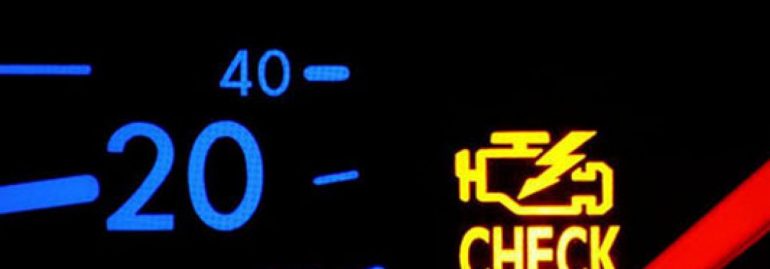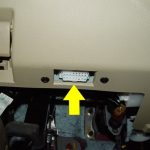Have you ever wondered what those mysterious warning lights on your car’s dashboard actually mean? Don’t worry, you’re not alone. Many drivers find On-Board Diagnostics (OBD2) to be a confusing concept. But fear not, because this article will demystify the basics of OBD2, giving you a clearer understanding of what it is and how it works.
OBD2 is a standardized system that monitors your vehicle’s performance and detects any potential issues. It uses a series of sensors and computer algorithms to analyze data and deliver vital information to your car’s computer system. This information is then translated into fault codes, which are displayed as warning lights on your dashboard.
Understanding these fault codes can save you time and money by allowing you to pinpoint the source of the problem. By connecting a diagnostic scanner to your OBD2 port, you can access these codes and decode them using a reference guide or online database.
So, whether you’re a car enthusiast or just a curious driver, understanding the basics of OBD2 is an essential skill. Join us as we unravel the mysteries of this fascinating technology and empower you with the knowledge you need to keep your car running smoothly.
How OBD2 works
OBD2 is a standardized system that monitors your vehicle’s performance and detects any potential issues. It uses a series of sensors and computer algorithms to analyze data and deliver vital information to your car’s computer system. This information is then translated into fault codes, which are displayed as warning lights on your dashboard.
One of the key components of the OBD2 system is the OBD2 port, also known as the Data Link Connector (DLC). This port is usually located under the dashboard on the driver’s side of the vehicle. By connecting a diagnostic scanner to this port, you can access the OBD2 system and retrieve valuable information about your car’s health.
The diagnostic scanner communicates with the car’s computer system and retrieves data from various sensors and modules. This data includes information about the engine, transmission, emissions, and other crucial components. The scanner then translates this data into fault codes, which provide a specific indication of the problem at hand.
Understanding these fault codes can save you time and money by allowing you to pinpoint the source of the problem. By decoding the fault codes, you can determine whether the issue requires immediate attention or can be addressed during your next scheduled maintenance.
OBD2 codes and their meanings
OBD2 fault codes, also known as Diagnostic Trouble Codes (DTCs), are alphanumeric codes that provide information about the specific issue with your vehicle. These codes are standardized across all vehicles equipped with OBD2 systems, which means that a code that applies to one car will have the same meaning for another car.
There are thousands of OBD2 codes, each with its own unique meaning. These codes are categorized into different classes, such as “P” codes for powertrain issues, “C” codes for chassis issues, and “B” codes for body issues. Each code consists of a letter followed by four digits.
For example, a common OBD2 code is “P0420,” which indicates a problem with the catalytic converter. Another example is “C1234,” which points to an issue with the right rear wheel speed sensor. By understanding these codes and their meanings, you can gain valuable insights into the health of your vehicle.
To decode an OBD2 code, you can consult a reference guide or use an online database. These resources provide detailed explanations of each code, along with possible causes and recommended solutions. By familiarizing yourself with these codes, you can have a better understanding of what needs to be addressed when a warning light appears on your dashboard.
Benefits of OBD2 for car owners
OBD2 offers several benefits for car owners, making it an essential tool for both DIY enthusiasts and professional mechanics. Here are some of the key advantages of using OBD2:
1. Cost savings: By being able to diagnose and fix issues yourself, you can save money on expensive trips to the mechanic. OBD2 allows you to identify the problem and determine whether it can be easily resolved or requires professional assistance.
2. Time savings: OBD2 provides quick and accurate information about the health of your vehicle. Instead of spending hours troubleshooting and trying to figure out what’s wrong, you can simply connect a diagnostic scanner and retrieve the fault codes. This saves you valuable time and allows you to address the issue promptly.
3. Preventive maintenance: OBD2 not only helps you diagnose existing problems but also enables you to perform preventive maintenance. By regularly scanning your vehicle for fault codes, you can identify potential issues before they become major problems. This proactive approach can extend the lifespan of your vehicle and prevent costly repairs down the road.
4. Emissions compliance: OBD2 plays a crucial role in emissions testing and compliance. It monitors the performance of emission control systems and alerts you if there is a problem. By addressing these issues promptly, you can ensure that your vehicle meets the required emission standards and avoid penalties or fines.
5. Improved performance: OBD2 provides valuable insights into the performance of your vehicle. By monitoring various parameters, such as fuel efficiency, engine power, and transmission performance, you can fine-tune your driving habits and maximize the performance of your car.
Common OBD2 diagnostic tools
To access the OBD2 system and retrieve fault codes, you need a diagnostic scanner. There are several types of diagnostic tools available, ranging from basic code readers to advanced scanners with additional features. Here are some common OBD2 diagnostic tools:
1. Code readers: These entry-level diagnostic tools are designed to read and clear fault codes. They provide basic information about the problem but may lack advanced features.
2. Scan tools: Scan tools offer more advanced features, such as live data streaming, freeze frame data, and graphing capabilities. They provide a more comprehensive view of your vehicle’s health and allow you to diagnose complex issues.
3. Bluetooth/Wi-Fi adapters: These adapters allow you to turn your smartphone or tablet into a diagnostic tool. By connecting the adapter to your OBD2 port and using a compatible app, you can retrieve fault codes and access various diagnostic functions.
4. Professional scanners: Professional-grade scanners are typically used by mechanics and automotive professionals. They offer advanced features, such as bidirectional control, component testing, and programming capabilities. These scanners are more expensive but provide a higher level of functionality.
When choosing a diagnostic tool, consider your specific needs and budget. If you’re a casual user who only needs basic code reading capabilities, a simple code reader or Bluetooth adapter may be sufficient. However, if you’re a DIY enthusiast or professional mechanic, investing in a more advanced scanner with additional features can greatly enhance your diagnostic capabilities.
OBD2 troubleshooting and maintenance
Troubleshooting and maintaining your vehicle using OBD2 is a straightforward process that can help you keep your car in optimal condition. Here are some tips for using OBD2 for troubleshooting and maintenance:
1. Regular scanning: Make it a habit to scan your vehicle for fault codes on a regular basis, even if there are no warning lights on your dashboard. This proactive approach can help you identify potential issues before they become major problems.
2. Research and educate yourself: Familiarize yourself with the common OBD2 codes and their meanings. This knowledge will enable you to quickly identify the problem and take appropriate action.
3. Address issues promptly: If you retrieve a fault code indicating a problem, don’t ignore it. Take the necessary steps to address the issue promptly. Depending on the severity of the problem, it may be something you can fix yourself or something that requires professional assistance.
4. Perform preventive maintenance: Use OBD2 to perform preventive maintenance tasks, such as resetting maintenance reminders, monitoring fluid levels, and checking battery health. By staying proactive, you can prevent potential breakdowns and costly repairs.
5. Keep your scanner updated: If you’re using a diagnostic scanner or app, make sure to keep it updated with the latest software and firmware. Updates often include bug fixes, performance improvements, and additional features.
By following these tips and utilizing the power of OBD2, you can effectively troubleshoot and maintain your vehicle, ensuring that it runs smoothly and efficiently.
OBD2 and emissions testing
Emissions testing is a critical requirement for vehicle registration or renewal in many states and countries. OBD2 plays a vital role in this process by monitoring the performance of emission control systems and alerting you if there is a problem.
During an emissions test, the OBD2 system is checked for readiness monitors, which are self-tests performed by the vehicle’s computer system. These monitors assess the performance of various emission-related components, such as the catalytic converter, oxygen sensors, and evaporative emissions system.
If the OBD2 system detects a problem with any of these components or systems, it will set a fault code and illuminate the corresponding warning light on your dashboard. In some cases, the vehicle may not pass the emissions test until the issue is resolved and the fault codes are cleared.
By regularly scanning your vehicle for fault codes and addressing any emission-related issues, you can ensure that your vehicle meets the required emission standards. This not only helps protect the environment but also prevents penalties or fines for non-compliance.
OBD2 and vehicle performance monitoring
In addition to diagnosing and troubleshooting problems, OBD2 can also be used to monitor the performance of your vehicle. By accessing live data from various sensors and modules, you can gather valuable insights into the health and efficiency of your car.
Some of the parameters that OBD2 can monitor include:
1. Fuel efficiency: OBD2 can provide real-time information about your vehicle’s fuel consumption. By monitoring fuel efficiency, you can adjust your driving habits and maximize fuel economy.
2. Engine performance: OBD2 allows you to monitor various engine parameters, such as RPM, throttle position, and intake air temperature. This information can help you identify issues with engine performance and take appropriate action.
3. Transmission performance: OBD2 provides data about the transmission, including gear position, fluid temperature, and shift solenoid status. By monitoring these parameters, you can ensure that your transmission is operating correctly and address any potential issues.
4. Vehicle speed: OBD2 can retrieve data about your vehicle’s speed, allowing you to monitor your driving habits and stay within the legal speed limits.
By monitoring these parameters and analyzing the data, you can optimize the performance of your vehicle and identify any potential issues before they become major problems. This proactive approach can help you maintain your car’s performance and extend its lifespan.
OBD2 and the future of automotive diagnostics
As technology continues to advance, so does the field of automotive diagnostics. OBD2 has come a long way since its introduction in the 1990s, and it continues to evolve to meet the changing needs of the automotive industry.
One of the key developments in OBD2 is the introduction of wireless connectivity. Bluetooth and Wi-Fi adapters allow you to connect your smartphone or tablet directly to your vehicle’s OBD2 port, eliminating the need for a separate diagnostic scanner. This convenience makes it easier than ever to access and interpret the data provided by the OBD2 system.
Another area of growth in OBD2 is the integration of artificial intelligence (AI) and machine learning algorithms. These technologies enable the OBD2 system to analyze large amounts of data and provide more accurate diagnostic information. AI-powered OBD2 systems can detect patterns, predict failures, and provide proactive maintenance recommendations.
Furthermore, OBD2 is becoming more than just a diagnostic tool. It is increasingly being used for vehicle tracking, remote monitoring, and telematics applications. By leveraging the data provided by OBD2, car manufacturers and fleet operators can optimize vehicle performance, improve fuel efficiency, and enhance overall safety.
Conclusion
Understanding the basics of OBD2 is essential for any car owner or enthusiast. It allows you to diagnose and troubleshoot problems, perform preventive maintenance, and monitor the performance of your vehicle. By connecting a diagnostic scanner to your car’s OBD2 port, you can access valuable information about your vehicle’s health and take appropriate action.
OBD2 empowers you with the knowledge you need to keep your car running smoothly, save money on repairs, and ensure compliance with emission standards. As technology continues to advance, the future of automotive diagnostics looks promising, with wireless connectivity, AI-powered systems, and telematics applications taking center stage.
So, the next time a warning light appears on your dashboard, don’t panic. Instead, embrace the power of OBD2 and use it to demystify the mysteries of your car’s diagnostics system. Happy scanning!
Conclusion
On-Board Diagnostics (OBD2) is a standardized system that plays a crucial role in monitoring and regulating your vehicle’s performance. By understanding the basics of OBD2, you can decode the fault codes displayed on your dashboard and identify potential issues with your vehicle. This knowledge empowers you to take timely action, saving you time and money in the long run.
Whether you’re a car enthusiast or just a curious driver, OBD2 is a fascinating technology that offers numerous benefits. From enhanced vehicle performance to cost savings and emission control, OBD2 has revolutionized the way we diagnose and repair our cars.
So, the next time you see a warning light on your dashboard, don’t panic. Instead, connect a diagnostic scanner to your OBD2 port and decode the fault code. Armed with this knowledge, you can confidently take your car to a technician or even troubleshoot and fix the issue yourself.
Demystify OBD2 and unlock the power of diagnostics. Your car will thank you!






